All Imhotep’s merits mentioned above were only a visible part of the great work he managed to do during his life. But there was also more valuable and significant invisible work thoroughly hidden from strangers. His high position gave Imhotep a real opportunity to contribute to implementation of the global architectural project narrated to him by the Sokrovennik, which project could bring an invaluable assistance to humankind of the remote future. (SENSEI of Shambala – Book IV)
I wanted to write an article, but a totally different material came out….
It sounds funny, but it’s really so. Initially I planned to complete the Keeper of Genesis series, and in the beginning of the final article I intended to give due to Robert Bauval, the author of discovery of the Orion Belt stars – Giza pyramids correlation, and to describe the moment of discovery itself. Later on I decided to describe the discovery moment in a separate small article, but then I got carried away, so to say…
The outcome is what you can read below. At that, referring to this discovery, it’s impossible to omit such a Light personality as Imhotep who was surely a talented engineer in addition to his numerous merits in spiritual evolution of humanity. I wish there were more engineers of such level on this planet. It should further be mentioned that when civil engineer Robert Bauval got engaged in Ancient Egypt and starry sky studies some Egyptologists told him, “What do you need this for? You are a decent constructor and civil engineer with high earnings. Go on building and don’t meddle in the issues of antiquity.” I believe we are very lucky he didn’t take those advices into account.
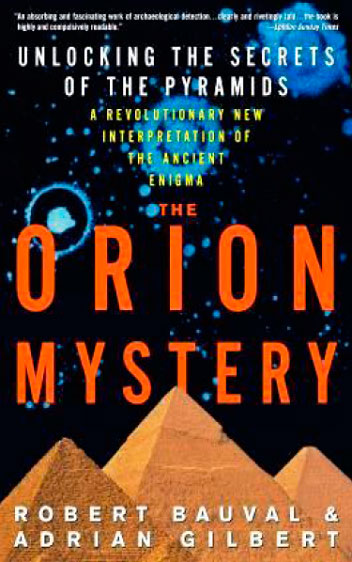
“It was early November 1983 and, as is usual at that time of year, the night skies in central Saudi Arabia were remarkably clear. This was the time of weekend camping by expatriates in Riyadh in the golden dunes about twenty kilometres outside the sprawling western suburbs of this sedate city.
My wife, Michele, had packed the usual gear: alcohol-free beer, plenty of drinking water, food and the sleeping-bags. My daughter, Candice, was only four years old, but already a seasoned desert traveller. Two other couples with their children joined us. The idea was to select a high dune so that the kids could play on the clean, golden-coloured sand while the adults relaxed over hot coffee and an elaborate barbecue. We were all looking forward to escaping from the hard work and no play mood of Riyadh and the stifling atmosphere of a deeply Islamic society. Night on the dunes can be very beautiful. Immediately after the spectacular display of the setting sun came the darkness, with the canopy of a star-spangled sky almost at arm's length. Lying in my sleeping-bag, I counted the stars until I fell asleep.
For some reason I woke up at 3 a.m., perhaps subconsciously motivated. Once more I gazed up, at first unsure of where I was. High in the southern sky, arching over and almost marking for us the curve of the celestial equator, was a luminous band of light, resplendent against the inky black of space. It was the Milky Way and it looked like a great river in the sky. On its west 'bank' was a spatter of beautiful stars, brighter than all the others which surrounded them. I recognised them immediately as the constellation of Orion and went to wake up my friend Jean-Pierre, who shared my interest in astronomy and whose passion for sailing had necessitated his learning to navigate using the stars.
Silently, he came with me to the edge of the dune. Looking at the very bright star now high over the horizon, he let me into one of the secrets of astronavigation. 'Do you know', he asked, 'how to find the rising point of Sirius once Orion has risen?' I shrugged my shoulders in ignorance. 'Well, first,’ he said, pointing in the direction of the 'river bank', 'you must find the three stars of Orion's Belt. These three form a row and you extend the alignment downwards to the horizon. When the belt stars have risen about twenty degrees – roughly the height of an open hand at arm's length and with fingers outstretched – they will be followed by Sirius at the place on the horizon where they point.' He was now pointing towards the bright star on the horizon, which we both knew was Sirius. Then, almost as an afterthought, he uttered these words: 'Actually, the three stars of Orion's Belt are not perfectly aligned. If you look carefully you will see that the smallest of them, the one at the top, is slightly offset to the east and they are slanted in a south-westerly direction relative to the axis of the Milky Way. Also notice how...' At this point I cut him short. He gave me a puzzled look as I quoted the words I remembered only too well from the Pyramid Texts: 'The Duat has grasped the king's hand at the place where Orion is… [PT 1717]. Oh, Osiris King… Betake yourself to the Waterway… may a stairway to the Duat be set for you at the place where Orion is… [PT 1717].' By now the others had woken up and joined us. 'Je tiens l'affaire!', (J. Lacouture, Champollion: Une Vie de Lumieres, ed. Grasset and Fasquelle, Livre de Poche 1988, pp.428, 456. Apparently shouted by Champollion on 14 September 1822 to his elder brother, when he realised that he had worked out how to decipher the Egyptian hieroglyphs.), I cried excitedly. I had deliberately chosen the words uttered by Champollion when he realised he had decoded the secrets of Egyptian hieroglyphic writing and I hoped that someone in the group, a few of whom I had involved in the aerial photo puzzle of Giza, would catch on. From their expressions it was obvious they had not.
Jean-Pierre kept on looking intensely at Orion.
'What have you seen…?', he inquired, amused.
'The three pyramids of Giza', I said calmly.
'The what…?' asked Michele. She had heard endlessly about the star religion of the Egyptians in those last few months. 'Is this a joke…?'
'No, I am quite serious,' and I pointed to Orion's Belt. Thus began a saga which was to run for another ten years.”
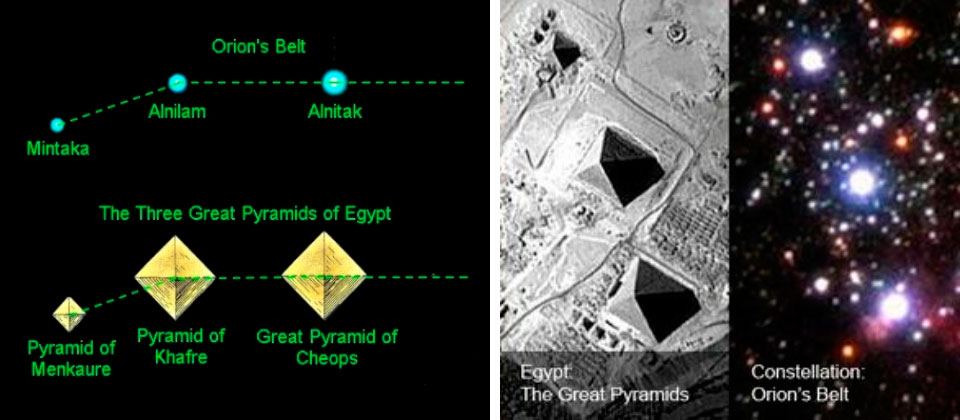

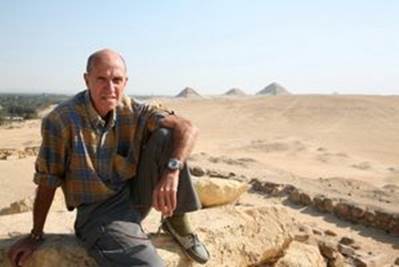
***
“In 1934, towards the end of the Great Depression, a successful American architect, James A. Kane, visited Dr John Wilson, then director of the Oriental Institute at the University of Chicago. Kane had brought a large folder containing detailed drawings, calculations and a geo-survey analysis, not for a new office block or some mansion in New England, but of the Giza plateau and the three great pyramids which stand on it. Wilson's first reaction was to try to persuade Kane to drop this hopeless business of 'solving the mystery of the pyramids' but then, in his own words: 'I found myself constantly falling back to the cry of "coincidence"! Now coincidence may be invoked once or even twice, but when several divergent elements coincide and coincide again, coincidence becomes conformity rather than chance.'
What the architect was showing him seemed obvious: the Giza pyramids, seen as a whole, were built in accordance with an architectural master plan. In his thesis, 'The Ancient Building Science', Kane was presenting a detailed analysis of the geoarchitectural aspects of the Giza pyramids which showed conclusively that each of the three great pyramids was part of a single, unified plan, one which must have been devised from the outset of the great enterprise at Giza. We do not propose to go into the details of his analysis, but Kane saw that the three Giza pyramids were developed from a plan based upon geometrical and surveying principles which he believed were related to astronomical observations. Even in the 1930s, most Egyptologists were aware that the pyramids were set out and orientated using astronomical observations. For example, the bases of the pyramids are all set along meridians, so that each side of their square bases faces one of the four cardinal points. That the entrances to the pyramids are virtually all on their north faces, and that their internal systems are designed to run along their north to south axes, indicates that this meridional setting was paramount… All this might seem obvious to us, but James Kane's ideas made little headway in Egyptology circles. Although he published his thesis, it was put to one side and forgotten…”
***
“Several decades later, in 1984, the American Research Centre in Egypt (ARCE) launched the Giza Plateau Mapping Project. This was to be carried out during two seasons in the period 1984 to 1986. The team leader was Mark Lehner, an American-born Egyptologist from Yale University. Two major reports were published in ARCE newsletters in Egypt before Lehner published his full report in a prestigious German Egyptological journal.
Lehner's reports are largely based on surveying and geological data. Curiously and in view of his earlier literary work, he was not much concerned with the cultic aspects of whatever plan might exist, nor indeed with the symbolic architectural and astronomical messages the monuments might contain; his focus was on the geomorphy of the site and the need to determine exact coordinates for the analysis of geological formations in the Giza plateau… Although Dr Lehner had performed an excellent geological and land survey exercise, the burning questions related to a unified plan were not answered but further obfuscated by technical j argon. Yet he was awestruck by the grand scale of the pyramids of Giza and Dashour which the Fourth Dynasty raised, and wrote that 'when graphed against time, this brief period of the most monumental architecture stands out as a sharp peak dwarfing the material invested for royal construction prior or subsequent to the reigns of these kings'. Lehner later reported that an obvious diagonal alignment existed running just east and close to the monuments. This line projects from the southeast corner of the first pyramid (Khufu) to the southeast corner of the third pyramid (Menkaura), later referred to as the 'Lehner line' by other researchers.”
***
“As is often the case with valid theories which evolve from the convergence of diverse data, the 'master plan theory' had popped up even before Lehner's survey was finished. A similar suggestion had come from John Legon, a self-employed physicist living in Surrey, England. He first expounded its basis in the Reports of the Archaeology Society of Staten Island. In 1988, and in greater detail, he wrote a paper entitled 'A Ground Plan at Giza' and this was published in the Oxford journal Discussions in Egyptology. Legon investigated the 'possibility of a positional relationship between the three pyramids' at Giza…
Legon showed mathematically that the three Giza pyramids fitted inside a rectangular perimeter having the north-south side as 1732 cubits and the east-west side as 1414 cubits. It occurred to him that a basic modular unit of 1000 cubits was used, and could be expressed as 1000 √3 and 1000 √2. Since these sides were of a right-angled triangle, the diagonal could be expressed as 1 000 √5. He concluded that such geometrical and mathematical harmony could not be the product of coincidence. The notion of a master plan at Giza was now getting strong support from other quarters, but Legon, intent on proving that there was evidence of a master plan, also omitted to investigate the religious or cultic motives for it. The question that still hung in the air was, and still is, what does the master plan express?”
***
In February 1988 a teacher and geologist, Robin J. Cook, published a paper entitled 'The Giza Pyramid: A Design Study'. Cook expanded on the findings of Lehner and Legon and added some ideas of his own to show that 'the Giza pyramids were designed according to a system of geometrical ideas, and that the site was planned as a whole…' Cook pointed out that a geometrical axial system could be shown to link the central pyramid, that of Khafra, with the small satellite pyramids next to the first and third pyramids. The main angles exposed were 60 degrees and 26.5 degrees; 60 degrees is the angle of the isosceles triangle and 26.5 degrees is produced by the diagonal of the double-square. This angle of 26.5 degrees could also be found in the main passageways of the Great Pyramid and the double-square of the floor of the King's Chamber; again defying the limits of coincidence. Cook, unlike Legon and certainly unlike Lehner earlier, sensed a powerful symbolism behind the plan, evidence which revealed the use of geometrical and geo-architectural patterns to express an ancient system of numerical philosophy. He rightly observed that:
“The Giza Pyramids represent a symbolic statement written in stone and the language of a mathematical philosophy. The Giza group probably represents a symbolic expression of the Heliopolitan myth…”
Yet Cook seemed unable to say what the symbolic statement was that was written in stone.”
***
I won’t tell how the Pyramid Texts were discovered, because the discovery is described in The Orion Mystery and other sources as well. I guess one can easily find an interesting story about the jackal that showed where the Texts were. Who knows whether it’s a legend or it was so in actual fact? The Pyramid Texts themselves are dated to the times of the 5-6th dynasties. We shall talk about these dynasties further below. As for the Texts, I’d like to mention a rather interesting point that there appears a shady figure known to many.
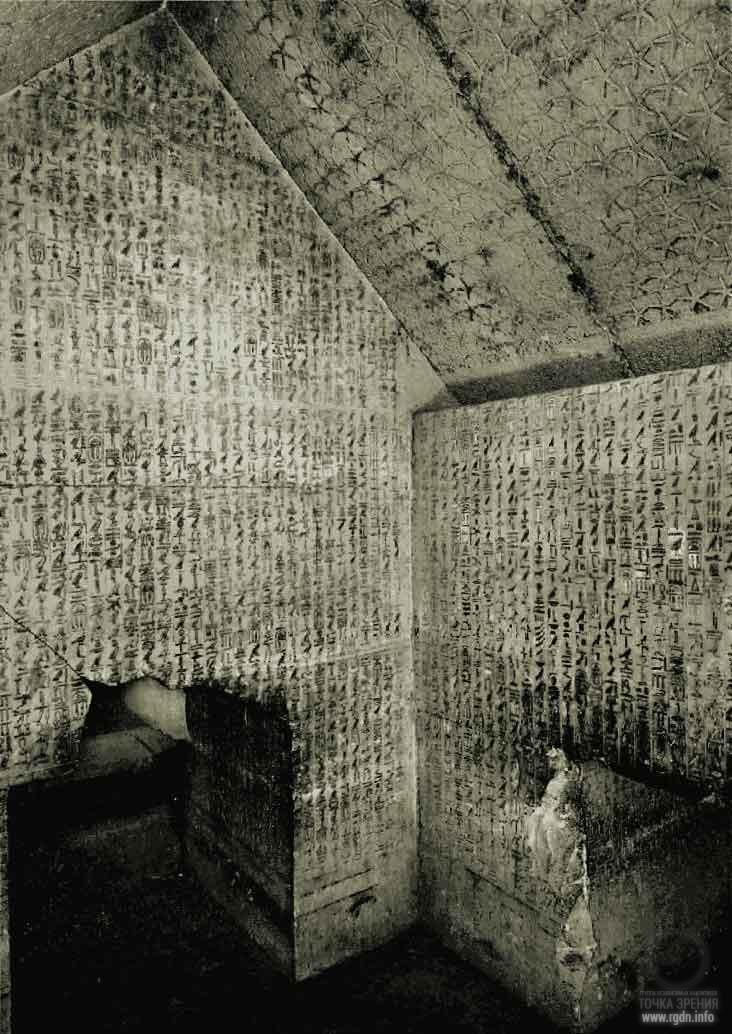
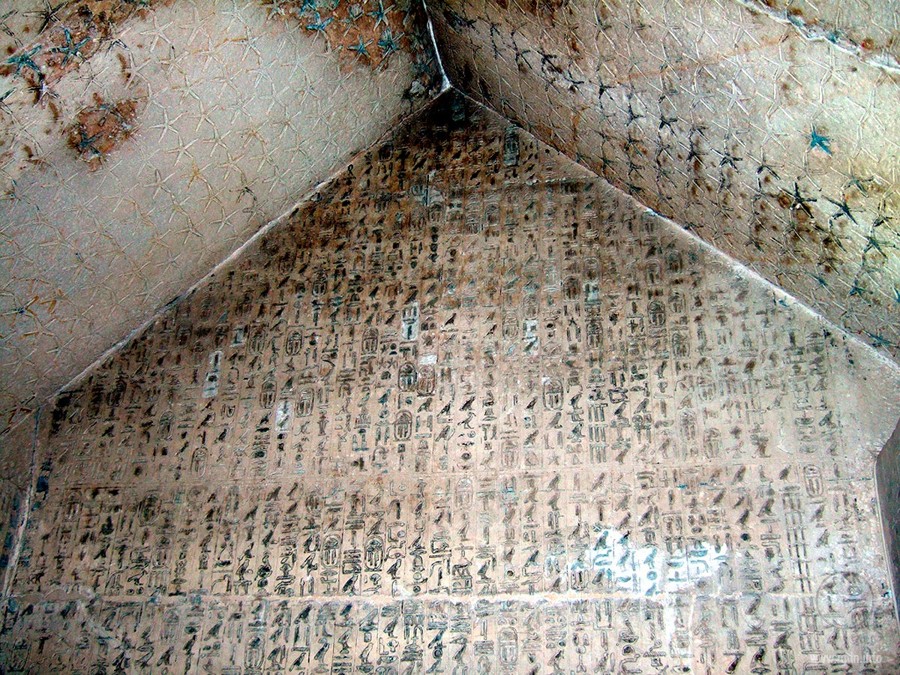
“It took the best part of five days for Maspero, with the help of Emile Brugsch, to copy down the texts from Vnas's pyramid; within a few weeks he had a rough translation ready for publication in the official journal of the Mission Archeologique d'Egypte. He wrote later:
I do not hide the fact that this tentative translation was rather rash, and I perhaps should have waited longer; I none the less thought that Egyptologists would be more grateful to me for a quick publication rather than waiting for an in-depth study, and would therefore forgive me the errors in interpretation in favour of the importance of the texts.
Maspero's confession proved necessary, because he was precipitate in his interpretation of the Pyramid Texts. Unfortunately a great deal of misunderstanding about them was caused not only by him but by other Egyptologists in the early part of the twentieth century. In their enthusiasm to bring out translations and commentaries, they depended as much upon gut instinct as anything else and this tended to be loaded with Christian bias.
The greatest culprit was an American Egyptologist named James Henry Breasted, who made a serious attempt at interpreting the texts in 1912. Breasted was to see in the Texts something that was not there at all: the remnants of a solar cult versus stellar cult rivalry, with the stellar cult in decline and there only for nostalgic reasons. He was thus to write:
Stellar notions have doubtless descended from a more ancient day when the stellar notion was independent of the solar… it is evident that the stellar notion has been absorbed by the solar… the solar beliefs predominate so strongly that the Pyramid Texts as a whole and in the form in which they have reached us may be said to be of solar origins.
Breasted concluded that the stellar cult deserved little attention; all his attention went to what he saw as the principal theme of the Pyramid Texts, a solar cult. The inevitable result was that the pyramids were allocated a solar pedigree by Breasted; such a conclusion put a solar stamp on them and their symbolic purposes that was going to be very hard to shift, for Breasted was no ordinary Egyptologist. By the end of his 'brilliant career' his list of credentials and titles filled two pages, and he was dubbed 'the real founder of Egyptology in the New World'. (I can imagine his megalomania with the two-page list of titles and credentials. – Note by the article author.)
Breasted (1865-1935) came from 'sedate Midwestern stock and had once planned to prepare himself for the ministry'; his interest in ancient peoples eventually drew him to the study of 'Bible lands', although he always 'retained a strong sense of mission'. He began his working life as a clerk in local drug stores, graduating in pharmacy in 1882. He then went on to study Hebrew in Chicago and moved to Yale University in 1890-1. There he was drawn to the study of Egyptology, which remained his life-long passion. In 1892 he went to Berlin and studied under the German philologist, Dr Adolf Erman. He gradually made a name for himself and attracted the attention and friendship of J. D. Rockefeller Jr., who, in 1924, gave him a grant which Breasted used in part to found the Oriental Institute at Chicago, America's first Egyptological seat. Further gifts from Rockefeller allowed Breasted to turn the Oriental Institute into the leading Egyptological institute of the New World, commanding the deep respect of scholars and students alike. With this status and academic authority, few would have dared to challenge his established views.
There is no doubt that Breasted's contribution to Egyptology is immense, but this does not alter the fact that his biblical bias and his personal vision of a monotheistic solar religion which he sought to graft on to the Pyramid Tests nearly closed the door to a fresh interpretation of them. There were many who sensed that something was adrift in his interpretations, and that the astronomical and stellar aspects of the Texts deserved closer scrutiny, but with the solar theory gaining the support of other Egyptology heavyweights, Breasted's views remained unchallenged for a long time.”
Hence, it turns out for a long time the entire Egyptology of the New World (and not just the New World I guess, for Egyptology just like any science tends to hold on authorities) has been relying on the authority of a person sponsored by the Rockefeller clan. Thousands of years have passed, while Archons still basically support their own brainchild – the Ra cult. Obviously, they know and remember how owing to a single real Human they can lose power over people. I believe it is worth dwelling on this at length. Let’s refer to relevant extracts from SENSEI of Shambala (Book IV) by A. Novykh.
“For you to better estimate what this Human managed to do for people, I will tell you briefly about the situation during the reign of pharaoh Djoser before Imhotep appeared among high authorities.
The head of the state was concerned with his power strengthening. He tried to reinforce his position in the north and waged a war on the southern border. He controlled copper mines on Sinai Peninsula, which belonged to his predecessors in power. By and large, he was occupied more with solving his ‘strategic’ problems than with needs of his people. His suite did the same.
Priests were engaged in political intrigues and mutual confrontation for domination of their theological systems. Since that time each ‘sep’ or ‘nome’ as Greeks called it later (in our terms those were regions into which the country was divided) had its own gods and its own religious concepts based, one should say, on echoes of the same more ancient knowledge. At that, gods of the nome where the capital was located at one or another moment were declared central gods of the whole country. Yet, all influential priests claiming for big power wanted to live very well. That’s why each of them played his tricks in struggle for power. For example, if doctrines of a competitive religious concept influenced the worldview of people more, priests even added not just main statements of such concept to their system, but also the very attributes of the ‘competitive’ god to their ‘own’ god.”
“Well, though priests were in power, nevertheless they paid much attention to the views of ordinary people,” Nikolai Andreevich remarked.
“Naturally. Moreover, no matter how paradoxical it may sound, they depended on the views of ordinary people, because for priests it meant bread! They support only an external illusion of their power that any religious position of their believers depends on the general decision of the ruling top of their religion. But in fact it’s only a small group of people who are afraid of losing their power if the majority of people would change their worldview, since along with such power they would lose their significance as ‘intermediaries’ between gods and people, and therefore not only the political influence, but also quite comfortable and prosperous existence provided to them by this power.”
“That’s true,” Nikolai Andreevich confirmed.
“So, at those times religion was more politics, and it was beneficial for priests to keep their flock obedient… Thus, the nomes were ruled by governors appointed by the pharaoh; they were provincial aristocrats who mostly spent their time in idleness. If they needed people’s support for some issues, they usually ensured loyalty of their subjects with the help of priests. Some of the nome governors were relatives of the pharaoh because there was a custom among monarchs to marry daughters of nome governors or to conclude marriages between them and their own children.”
“I see,” Nikolai Andreevich grinned. “This ‘custom’ seems to be quite durable.”
Sensei just smiled and went on telling.
“However, such political marriages did not always provide provincial aristocracy with a long-awaited connection with the ruling house. Sometimes it turned into uncompromising enmity and competition. And when a pharaoh got a few off-springs from different wives, who were candidates for the throne, it could lead to conspiracies and counter-conspiracies with secret support of this process by several priests and interested aristocrats who in their turn also dreamt of advancing their son or close relative to a nome governor position.”
On hearing the last words Nikolai Andreevich laughed even more, “Nothing has changed indeed!”
“Generally speaking, almost everybody, starting from the pharaoh, high-ranked priests, aristocrats and nome governors, down to collectors of natural tributes, were occupied with an actual problem: where to steal something, how to capture more and to extend the sphere of one’s influence. Whereas ordinary people were mostly deprived of the authorities’ attention and left on their own; as they say, everyone survived as he or she could. Commercial activities of the country were controlled by big cities or to be more precise by those who controlled those cities. Even Memphis, which was an important handicraft and trade centre of the state with big multinational population, lived its own independent life. To cut a long story short, everything was as usual. Everyone was busy with their own problems: some had nothing for a soup, others complained about small pearls.
Thus, from his forerunner Imhotep ‘inherited’ not the best situation in the country. Moreover, as a man of Knowledge he understood the reasons of what was happening around. He was aware that Egypt’s major trade routes were secretly controlled by Archons’ people, and that Archons benefited from such a situation in the country and from people’s concern about their own problems. Knowing that, Imhotep acted in a very wise way.
Within a short period of time he put the country into order. First of all, he dismissed Archons’ people from power and replaced them with responsible people whom he trusted and who knew their job well. He reorganized bureaucracy and forced government officials to work. He established severe discipline among them: any theft, deceit, bribery or mercenary use of position were stopped and strictly punished. He made the pharaoh a protector of all people, grown-ups and youth. Thanks to Imhotep, fair laws were introduced, which were strictly complied with. Anyone in this state, even a poor commoner, if treated unjustly had a right not only to complain about his offender, even when the latter was high and mighty, but, saying in our language, to sue him and win the case. Imhotep formed groups that checked population’s complaints quite promptly and effectively, and if such complaints were justified, the guilty person was punished immediately. That’s why common people started calling Imhotep the ‘Kind friend of poor people’, ‘Enemy for all lawbreakers and genuine Truth-adherent’, ‘Wise Man who gives valuable advices for no reward’, ‘One who is respected by the most esteemed people’. Later on such popular epithets began to be attributed to pharaohs of subsequent dynasties.
At the same time Imhotep brought the irrigation system to order. He put responsible and professional people at the head of works on canal construction and promptly solved one of the main problems for Egyptians, the problem that was a heave burden on the ‘shoulders’ of the pharaoh, namely distribution and consumption of water for both everyday and agricultural needs. In the hot dry climate of Egypt, where the average annual air temperature is about thirty-five degrees, water shortage provoked famine and public disturbances. The irrigation system had surely existed before, but it’s been in a terrible state. Yet, once it was put in order, it resulted not only in improvement of conditions of ordinary people’s life, but also in significant growth of yields. There appeared a grain excess that attracted merchants from other countries, and additional incomes emerged. The pharaoh’s treasury began to get replenished quickly (it was already in peaceful time, without wars!).
Owing to Imhotep’s initiative and care, they started to open schools – the so-called ‘Houses of life’ or “Houses of Wisdom’ everywhere, and knowledge became available not only to the privileged minority. First Imhotep organized special schools at the pharaoh’s court, where he personally and his assistants taught gifted young people (usually children of government officials). They taught professions which at that point were necessary for putting the state in order, e.g. clerks, accountants, organizers of various works. Young people were taught to read, to calculate, to write, and studied other sciences and skills necessary for their professions… By the way, in those times they mostly wrote hieroglyphs on earthen crocks, leather, and limestone pieces. But it was Imhotep who introduced as writing material specially processed stems of papyrus, a marsh plant that abundantly grew on the banks of the Nile.
The time and money invested in education of talented young people justified themselves to such an extent that soon Imhotep managed to achieve opening of such schools all over the country in temples, where they started to train future clerks, lawyers, physicians. Moreover, the most remarkable thing was that they began to select such talented, gifted children from ordinary families as well. And later they opened schools under some public institutions where gifted children (even from poor families) were prepared for a specific profession chosen in advance by students themselves, e.g. a sculptor, a merchant, a bricklayer, etc.
At that, the more gifted and talented a young man was, the more he was initiated into more advanced sciences. Imhotep arranged it so that young people themselves were interested in obtaining solid and high-quality fundamental knowledge. Why? Because the more talented, professional and gifted a person was the more career opportunities were opened to him or her by the state, and his or her life conditions improved. The most revolutionary was that it didn’t matter to which family a person belonged (a poor or a rich one) since his or her abilities and high morality were valued above all. The ultimate outcome of such policy was that people were given a real opportunity to show their better qualities and abilities. For instance, even an ordinary clerk who had high morality and professional and organizational skills had a chance to become a governor of a city (like a royal governor) or even of a nome, that is to join the privileged class. Briefly saying, he was able to realize himself as a Personality owing to his talent.
Do you see what was happening?! They began to intensively advance talented people, starting from the highest layers of power and down to the lowest, starting from management structures of the state and ending with science, education, medicine, and arts. It became fashionable in the society to have moral principles, to be polite, clever, educated, to set high goals. Why? Because the state began to actively stimulate moral and intellectual achievements of its citizens.”
***
“Namely due to Imhotep’s popularity and fame his image became an ideal for ancient Egyptians, that is a man who doesn’t speak too much, who is wise and resistant to hardships and strikes of destiny, having humanistic views, deeply human, with absolute faith in after-death existence of the soul. Many people of subsequent generations (not to mention those who lived in his time) were brought up with the following popular Imhotep’s proverbs and sayings:
“It’s better to be poor and to live in a desert, but have a lotus in the soul, than to be rich and to live among people with emptiness in the soul;”
“There is no use in freedom for a man if he is blind towards his soul;”
“Merits are measured by deeds you have performed;”
“In the time of ordeals neither look for friends nor blame enemies, but set hopes upon God;”
“Only the one misses slavery who strives to dethrone the king who gave him freedom;”
“Only the one flourishes who helps people in need, but not the one who makes others fear him.”
They are just miserable twelve men who live a dastard life and die like everybody. But the most pitiful thing is that their places are not vacant. There were always plenty of people who are willing to get into Ariman’s traps set by him for those who want to possess ‘absolute power on this earth within their single life’. However, there is no free cheese in Ariman’s mouse traps… (read more in SENSEI of Shambala – Book IV)
“So, what did Archonian priests do? They wrote in their concept that, if a person believes and professes their religion and not any other religious concept of Egypt, any of their believers will become a chosen one among the dead after his or her death. After one’s death the person would be transformed into a shining spirit and would accompany god Ra in his voyage along Duat. At that, one’s happy existence beyond the grave depends solely on the formula he or she would purchase from priests during his or her life, which would let him or her reach one or another zone in the other world.”
***
“It turns out the myth about the ‘lakes of eternal fire’ was born as long ago as in those times?” Kostya got surprised.
“According to the concepts of those times corrected by priests,” Sensei responded to him. “At that, since the religion of Ra sun-worshippers later became dominant in Egypt, Copts ‘inherited’ relevant views, too. In their opinion, hell was inhabited by demons with heads of snakes, lions or crocodiles, and those demons pulled a soul out of a doomed person’s body, then stabbed it with great savageness, cut it, plunged arrows into its ‘sides’, whipped it to the river of fire and threw it there. Thereafter, according to their views, such suffering soul was thrown into external darkness, chattering its ‘teeth’ of shrilling cold. Nonetheless, despite such torments, it didn’t end its existence and after a certain while got to the first hour zone of Duat.”
***
“When pharaoh Menkaura (the Greek name Mycerinus) came to power, priests left the ‘warmest records’ of him for descendants and called him a ‘just monarch’ who ‘eased the burden’, ‘not only listened to complaints at officials, but was always ready to eliminate injustice.’ He ‘allowed open temples so that people could make sacrificial offerings to gods’. Yet, as a matter of fact, this man was a melancholic personality, already dependant on the priests of Ra. His daughter was married to a high ranking official who was a member of the Freemason secret society and later on became a priest of ‘the three obelisks’ erected in honour of Ra. Then the priests arranged it so that the pharaoh’s daughter died suddenly. Being despondent by the loss of his beloved daughter, the pharaoh became even more dependent on the Freemason priests who manipulated him. Under the reign of this pharaoh, Imhotep’s Spiritually Free Bricklayers who were left in power had a difficult time, also as to the issue of construction of the third pyramid of the Orion Belt. Nevertheless, they managed to finish the construction.
While pharaoh Menkaura ruled, Archonian priests were thoroughly preparing to seize power. However, the core of Imhotep’s disciples was still strong enough and resisted them in all ways possible. Therefore after the pharaoh’s death the Archons did their best to bring to power influential people from Heliopolis, headed by the chief priest of Ra (Userkafa) who belonged to the Freemason secret society. Those people gave birth to the Fifth Dynasty and sharply cut off access to the throne for representatives of the Fourth Dynasty. These very people carried out a religious revolution in the country and provided the Archons with full access to this land.
***
“In the meantime, Archonian priests made radical revolutionary changes in the leading religion for masses, which changes were aimed at subtle substitution of people’s worldview towards stimulation of the Animal Nature and predominance of material values in their life.”
***
“Furthermore, along with all such changes they actively began to alter the history of the previous two hundred years when owing to Imhotep people were following a civilized way of spiritual evolution. The history was rewritten anew. Valuable scrolls of the past were eradicated, especially those written by spiritually mature persons. Other scrolls, the texts of which were quite known and popular among common people in the form of proverbs and aphorisms, were simply altered in their own manner. The original texts were destroyed, and people were given already modified copies with quotations that reoriented people to a more material worldview on the background of generally accepted moral teachings that remained. The new teachings were mostly prepared for the younger generation. At schools, particularly those located at temples, students were forced to copy such generally accepted moral sayings in writing and to learn them by heart. Such practice existed in the time of Imhotep, too, but it was more spiritually directed.
The Archonian hysteria on destruction of historical records left by followers of Imhotep’s teaching reached the point that they began to withdraw bodies-mummies of people (including noble and famous ones) whom the Archons knew to be members of the Spiritually Free Bricklayers society. The mummies were not just withdrawn, but torn to pieces and eradicated. All that was presented as ‘people’s wrath’, though common people had nothing to do with that. It was done by specially appointed priests who were ordered to look for the texts of secret knowledge and writings from Imhotep’s teaching, which were supposedly hidden in the mummies of those people. This was how the Archons were afraid that the knowledge might occasionally leak out among people again.”
“Well, Imhotep seems to have frightened them seriously by his activities!” Victor said.
“Surely,” Sensei nodded. “It’s a rather serious thing when one destroys the illusion of this world and redirects people to the spiritual path, bringing them out of the Archon’s control… So, what was the end of this story? Once the Archons finally ensured their people stayed in power in Egypt, once they finished all their secret work on destruction of the Spiritually Free Bricklayers organization and Imhotep’s teaching and changed the state policy towards reorientation of the worldview of common people, they lost their interest in Egypt. Having set their ‘pillars’ in the country via Freemasons, the Archons started making profits out of devastation and people’s troubles.
The Fifth Dynasty was doomed. Noble aristocrats fought for the throne, using even the most dirty political methods. Local ‘kings’ competed among themselves right up to military conflicts. Priests of the nomes benefited from such destabilization and began to gain strength, further promoting and spreading the influence of their religious cults. Consequently, the political influence of Heliopolis priests (who were simply deceived by the Archons after they had implemented their own plans with the priests’ hands) diminished considerably. Serious unrests and then riots began among ordinary people. The Sixth Dynasty that came to power attempted to bring order through the policy of military aggression, but it was similar to building a dam of thin twigs against a swiftly growing turbulent flow of dirt and water. The country was in the state of political instability. The end of the Sixth Dynasty’s reign in Egypt was marked by severe famine caused by two factors: such a policy and drastic climate changes that gave rise to a series of low floods.
After the rule of the Sixth Dynasty complete anarchy began in the country. Noble aristocrats made an attempt to form a temporary government where they would take up leading posts in turns. However, since each of them was interested only in development of his own nome, nothing good came out of it. The Seventh Dynasty was unable to stay in power: it had ‘seventy kings who ruled seventy days’. Thereafter a civil war started in Egypt, which divided the former strong, mighty and flourishing state into small weak unprotected states ruled by dynasties of big landowners. Thus by their active destructive activities the Archons doom whole generations of people to many centuries of sufferings and concerns only about problems of survival in this world.”
Rather interesting events have been described. The times of Djoser and the 4th Dynasty pharaohs compared to those of the 5-6th dynasties are like Heaven and Earth. Certainly, there will be those who’ll say there are no confirmations of the aforesaid and so it’s all fiction. Especially for such people let me refer to an interesting fact mentioned by R. Bauval. Many people are aware of it, but it’s not discussed publicly because there is no logical explanation. How could this happen, that people knew something and then suddenly lost their skills? Djoser’s pyramids in Saqqara and pyramids of the Fourth Dynasty are still there, whereas pyramids of the Fifth Dynasty collapsed to ruins. In other words, there was a certain period of time – about 200 years – when people were building pyramids capable of standing for millennia, but then people suddenly started building pyramids that couldn’t pass the time test and simply tumbled down. I believe attentive and intelligent readers will think this over…
***
“Jaromir Malek, director of the Griffith Institute of the Ashmolean Museum, has claimed that we do not need knowledge of architecture or history to know which pyramid came first:
It is enough to look at their present silhouettes: the step pyramid… is of the Third Dynasty… the pyramids proper which present a clean and sharp outline against the sky date from the Fourth Dynasty; those of the Fifth and Sixth Dynasties are now ragged shapes resembling huge piles of stone block and rubble…
***
“It is obvious to anyone visiting the pyramids that after the Fourth Dynasty there was a sharp decline in the skill of pyramid building. The kings of the Fifth Dynasty built five small pyramids at Abusir, about nine kilometres south-east of Giza, and a further two small pyramids at Saqqara, not far from Zoser's step pyramid. All of these were rather poorly constructed, and the workmanship of the inner core, which has mostly collapsed, is very much shoddier than that of their illustrious predecessors of the Fourth Dynasty. All the Fifth Dynasty pyramids are now mere heaps of rubble, some more like mounds than pyramids. Four small pyramids were built by the Sixth Dynasty pharaohs at Saqqara, all about fifty-three metres high and of even shoddier workmanship. With these last 'the Pyramid Age par excellence', as Edwards puts it, came to a close.”
***
“It is almost as though Egypt experienced a technological exodus at the end of the Fourth Dynasty, a brain and skill drain that depleted the pharaonic state. During the Fourth Dynasty, the Egyptians were supreme master builders, then suddenly, within a generation or so of their demise, there was an amazing loss of skill in the art of pyramid building. This is so pronounced that even the most conservative of architectural Egyptologists, Dr Alexander Badawy, describes the Abusir pyramids as being 'strikingly poorer than the megalithic Fourth Dynasty structures'. Visitors to the Abusir site are hard pressed to believe that such pitiful heaps were once geometrical pyramids.
Egyptologists still debate the events that led to what they call the collapse between the end of the Fourth and the start of the Fifth Dynasty.”

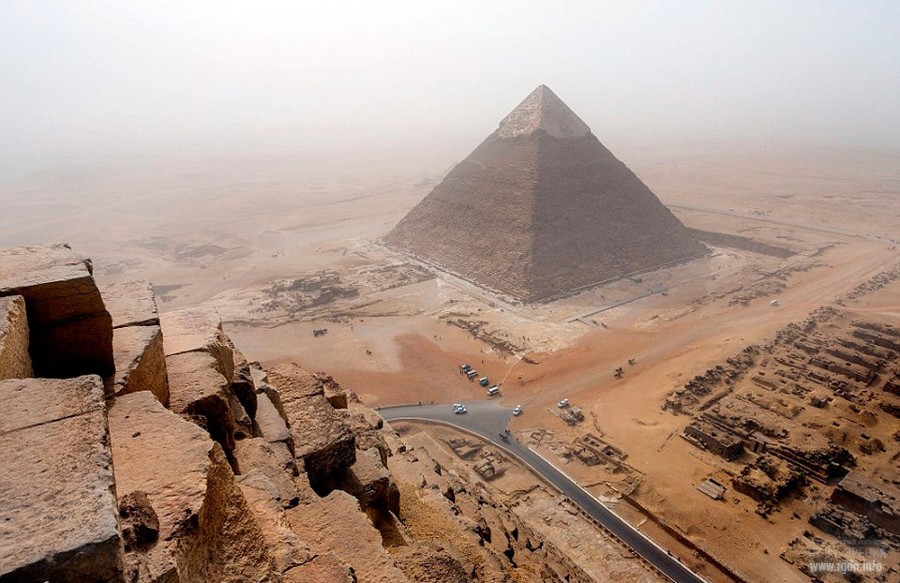

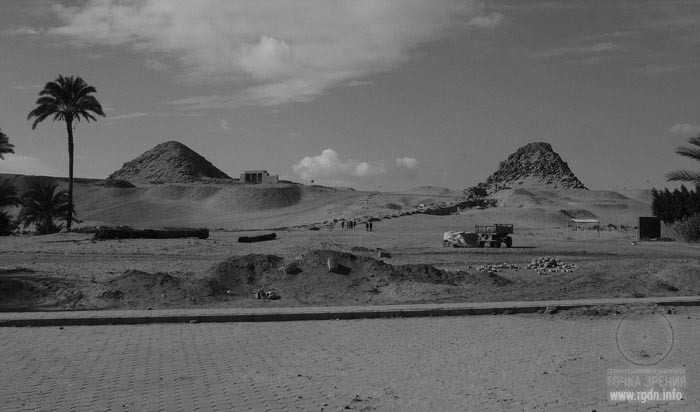
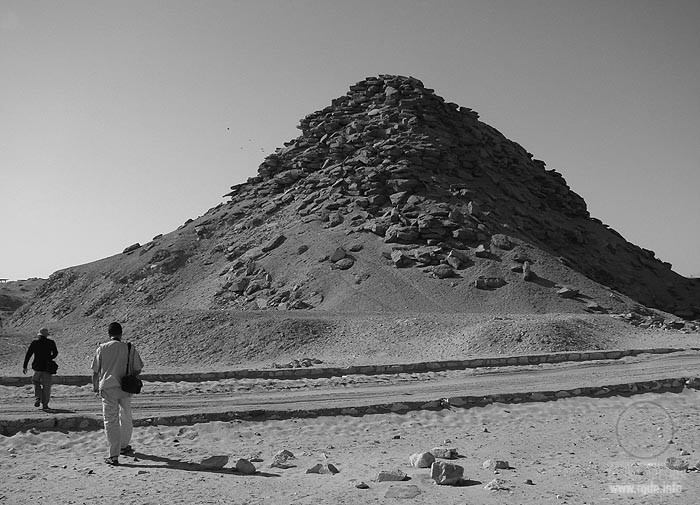
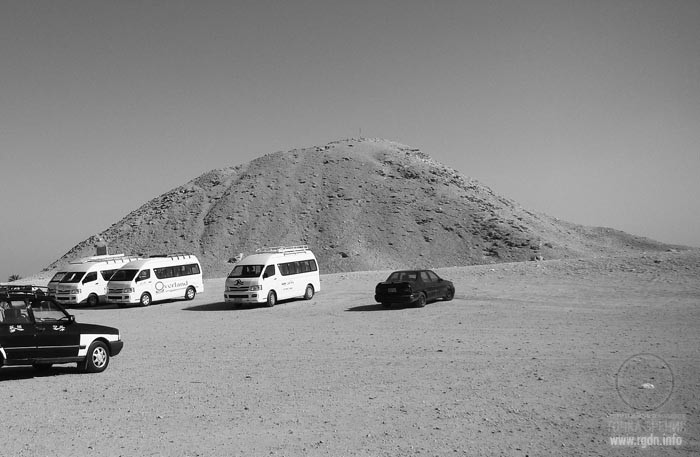
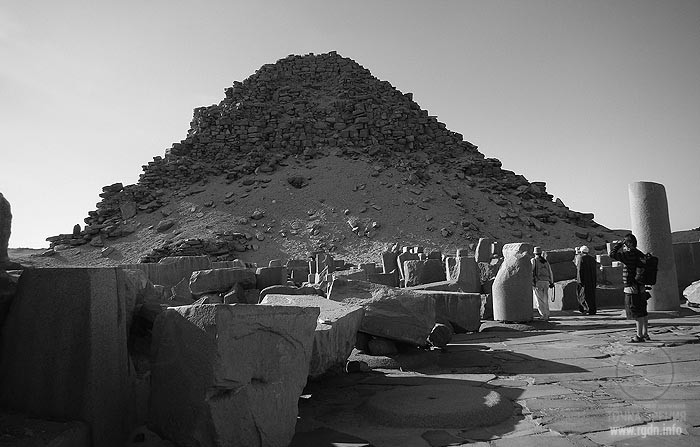
Recurring to Bauval’s discovery that the three Pyramids of Giza copy the stars of Orion’s Belt, I’d like to add the following. Bauval studied translations of extant ancient Egyptian texts, and in the very beginning of this article I cited an extract with quotes from the Pyramid Texts. However, we should understand what we now read as ancient writings and records are not the Primordial Knowledge we talk about. Those are only possible echoes of religious concepts that existed in Egypt before Imhotep as well as religious concepts maintained after Imhotep. I cited an extract about how in the times of the Fifth Dynasty the history of the previous two hundred years was eradicated, including scrolls, inscriptions and everything else that could threaten the power of priests. But, as you already know, any religion contains grains of truth, and religious concepts of Ancient Egyptian are no exception. I think Robert Bauval managed to somehow discern a small, yet very important grain in those concepts, which is important first and foremost for his contemporaries, i.e. us, and owing to him we can now talk and write about the Orion-Draco pendulum, about the cyclicality of historical events and global disasters. We should thank him very much for this indeed!
We are living in the unique time, in the crossroads time. Whether it’s good or not, may everyone decide for oneself. Moreover, we did not choose when and where to be born, though, who knows, maybe somebody was given such a chance. This time is unique because every human being, absolutely each and every person now, so to say, has an exclusive opportunity to access the knowledge that priests have been hiding from ordinary people for millennia. Even in the times of Imhotep hardly everyone had such a chance, because he did not let all people to his organisation. It’s only questionable whether people will be willing to familiarize themselves with the knowledge and accept what’s disclosed to us now. What will people choose: white or black, establishment of a society where CONSCIENCE is a paramount law… or the useless consumer society which has already become obsolete, for it is not living and cannot be living? Only one thing – death – is in story for such latter society.
Prepared by Igor
 The story of one discovery. “The kind friend of poor people”. Ancient Egypt of the late 3rd through 7th Dynasties
votes:
253
The story of one discovery. “The kind friend of poor people”. Ancient Egypt of the late 3rd through 7th Dynasties
votes:
253
|

Project Aim










Leave comment